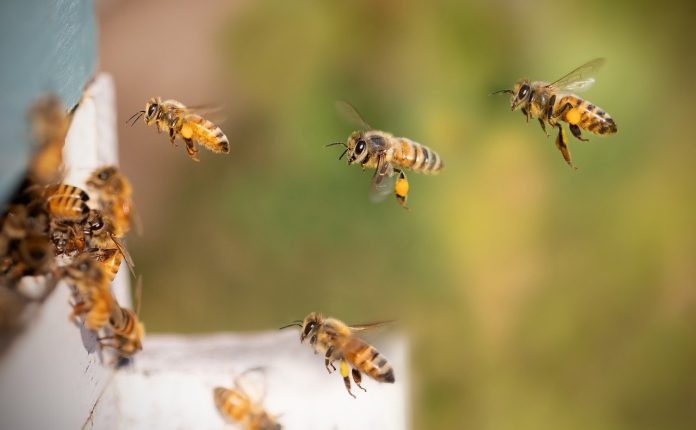A recent New York Times (NYT) article titled “The Beekeepers Who Don’t Want You to Buy More Bees,” explains that contrary to popular media narratives, honey bee populations are healthy and numerous. This is true. Colony collapse disorder, the main threat to bees, is largely a commercial bee problem and not necessarily a wild honey bee problem.
In the article, professional bee-keeper Gorazd Trusnovec explains to NYT writer David Segal that the well-intentioned growing popularity of beekeeping is actually misguided, because there are now actually too many honey bees in areas all around the world.
“If you overcrowd any space with honey bees, there is a competition for natural resources, and since bees have the largest numbers, they push out other pollinators, which actually harms biodiversity,” he said, after a recent visit to the B&B bees. “I would say that the best thing you could do for honey bees right now is not take up beekeeping.”
The U.S. Environmental Protection Agency lists the factors it believes are the most likely causes of the decline in bees and other pollinators:
- Honey bee killing, invasive varroa mites;
- New and emerging insect viruses;
- Pesticide poisoning;
- Habitat changes and lack of food sources;
- Combinations of the above factors.
The New York Times itself has contributed to spreading fallacious claims about climate change and CCD, like in “Without Bees, We Are in Trouble,” and for bumblebees, “Climate Change: It’s a Buzzkill for Bumblebees, Study Finds,” in the past, so the present story is refreshing for its accuracy.
Beekeeping has become so popular in places like Slovenia, for example, that the NYT reports honey yields are dropping locally despite a huge increase in hives because there is not enough plant nectar for all the bees.
Honey bees are also not the only pollinators around, and an overabundance of them could negatively impact the populations of other bee species, like bumblebees, as well as non-bee pollinators. This is particularly true in places like North America, where honey bees are an introduced species brought over by European settlers as livestock for honey production. They are not native here, and are considered by conservationists to be invasive competitors to native species.
Honey bees are doing more than fine, regardless of climate change. According to this NYT investigation, they are almost doing too well, due to an increase in the number of beekeepers. Commercial beehives experiencing CCD are not indicative of the health of the entire species, and certainly climate change is not to blame for their problems. Thanks, NYT, for looking beyond the narrative that “climate change causes everything,” to get to the true root cause of the struggles of honey bees and other pollinators, at least in this one story.





















Here in Cleveland, Ohio, USA near downtown, I see honey bees, bumble bees, and other bee-like creatures all of the time during the warmer months.
Glad they updated this info.
When was this article published in the new york times? Did the NYT post an apology for their previous front cover that talked about climate change killing the bees?